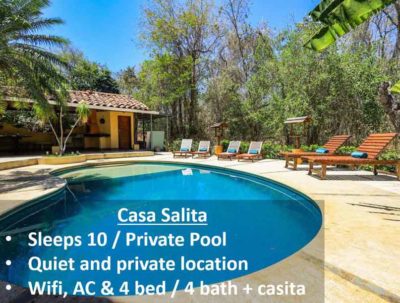Our oldest daughter is finishing up her last year of college. She got a full tuition scholarship to a city college, which saved us over $200,000 over four years vs going to a private college, an opportunity cost large enough to buy a house outright for cash! While we didn’t do that, we invested that money in her future in other ways, including real estate.
While we dodged the college-tuition bullet there, the college monster rears its ugly head again, as our youngest daughter is now less than two years away from entering college. She’s looking at both city college (~$30,000 over four years, tuition only) and private college (over $160,000 over four years, tuition only). Room and board easily adds another $80,000 over four years.
With the real estate portfolio we’ve amassed over the years, we can tap into that to pay for college. Here are three ways we can use our real estate portfolio to cover the $25k-$60k annual college cost.
Sell properties that have appreciated

We have owned our rentals in Asheville the longest (both over 10 years), so they have appreciated, and our equity has built up, meaning a sale or two could enable our real estate to pay for college. If we sold the two Asheville properties, we’d net over $100,000 which would cover all of a four-year degree from a city college, most of the degree from a state college and a third from a private college.
But we have long-running tenants in both properties and haven’t had any large maintenance issues or tenant disturbances, so we’d be letting go of good rentals for a quick surge in cash. It seems foolish to forego a reliable annual income stream that can extend for decades, in order to pay for a four-year expense.
Use a HELOC to draw the equity without selling
If we use a home equity line of credit (or HELOC) against any of our properties, we can tap the equity, thereby using real estate to pay for college without selling anything.
When we purchased our rentals in Jacksonville, the market was competitive, and we had to pay cash. After closing, we were able to open HELOC’s on two of our properties. The available credit totals over $150,000, which is more than we’d net from selling the Asheville homes, and we wouldn’t have to give up the properties and their ongoing income.
The HELOC’s wouldn’t be enough to cover four years in private college, but it would cover city or state education. We currently save the rental income on those properties, but we would be able to use that rental income to make payments on the HELOC instead. There would be a drop in our savings cushion, but we wouldn’t feel any change in our household budget.
However, we rely on these HELOC’s for our reserves – with interest rates so low we do not keep any significant amount of money in cash – so if we max out our HELOC’s we would have almost no liquid reserves. For this reason, tapping the HELOC’s is a last resort.
Earmark rental profits for college
Using rental income is the final way we could use real estate to pay for college. We currently net around $2,500 per month on our rental properties, which could cover all of city college, most of state college, and ~40% of private college. It would mean no savings during the college years and little room for unforeseen expenses – but that’s what the HELOC’s are for.
This option offers the most flexibility, as it leaves our rental portfolio and household spending unchanged. However, there is still the question of how to cover the more than $35,000 we would still need each year if our youngest opts for private college.
Why we didn’t save for college
We made a conscious decision not to save for our children’s college expenses. It wasn’t that we weren’t planning on helping them out, but we decided to concentrate on retirement and real estate assets first.
- On the retirement front, we figured we could borrow for college but not for retirement, so that had to come first. Also, saving for retirement early provides the benefits of compounding saving.
- On the real estate front, we figured that the real estate gave us far more flexibility than a college savings account would, and that flexibility would help to cover college costs.
Many options to choose from
As you can see from the above, we now have three options to pay for college – 1) to use the rental profits, 2) to use the collateral to borrow against, or 3) to sell the properties outright.
In fact, if we came into a pile of money even today, equivalent to our daughter’s projected college expenses, we still wouldn’t stick it into a college savings account. We would buy real estate that cash flows and then apply one of the above strategies to cover the college part.
College is a very temporary expense. Real estate lasts much longer.
I’m still holding out that my youngest gets a Disney show or recording contract and then we don’t even need to cover her college costs. Till then, at least we have our real estate to pay for college.


 We are Scott and Caroline, 50-somethings who spent the first 20+ years of our adult lives in New York City, working traditional careers and raising 2 kids. We left full-time work in our mid-40’s for location-independent, part-time consulting projects and real estate investing, in order to create a more flexible and travel-centric lifestyle.
We are Scott and Caroline, 50-somethings who spent the first 20+ years of our adult lives in New York City, working traditional careers and raising 2 kids. We left full-time work in our mid-40’s for location-independent, part-time consulting projects and real estate investing, in order to create a more flexible and travel-centric lifestyle.  Financial independence and early retirement is not something we originally focused on, but over time realized it was possible. Our free report,
Financial independence and early retirement is not something we originally focused on, but over time realized it was possible. Our free report, 







